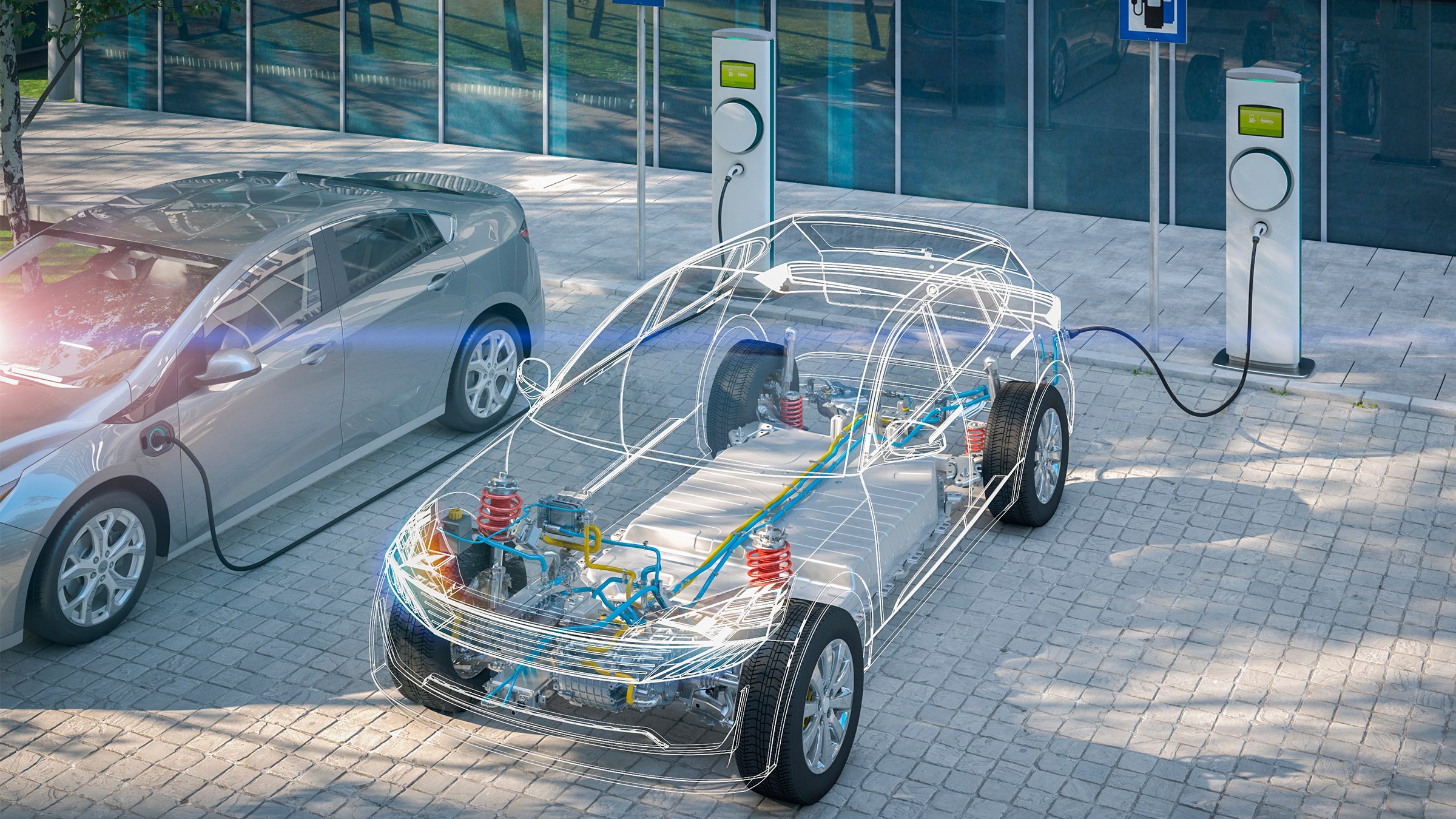The electric vehicle (EV) revolution is in full swing. When you are focused on designing an environment to deliver enough power for the world’s growing volume of electric vehicles, you need to feel confident that you can meet increasing demand through a smart and scalable production strategy that allows you to build in growth from the start. Any battery supply interruption – or a delay in Gigafactory commissioning – can quickly derail EV production plans.
Battery makers have diverse production needs, shortened project timelines, and limits on their production capabilities. Automotive manufacturers rely on maximized battery production rates to meet exponential demand growth. In order to consistently deliver high-quality, safe batteries, you often need to include new automation into pre-existing processes using modeling and simulation tools to test "what if" production scenarios offline to meet shortened project timelines, and you must be able to adjust on the fly to keep up with the rapid evolution of battery technology.
As a result, EV and Battery manufacturers are rapidly expanding their production capabilities by developing a connected battery Gigafactory. There has never been a greater need to deploy more intelligent and effective manufacturing using digital visual support tools that can help accelerate projects, reduce downtime, and allow for offline testing. This means massive battery production facilities are a must—no small undertaking.
Build value across your operation
So, how do you successfully launch a battery Gigafactory? The solution lies with intelligent, harmonious operations in your smart factory. And to realize this, you must have a manufacturing execution system (MES) as the cornerstone of your connected Gigafactory, as we mentioned recently. Bridging the gap between IT and OT, a modern MES enables end-to-end connectivity and visibility to help manufacturers optimize operations and address key quality issues.
Digitalized businesses respond to market demands faster, and an MES is a crucial reason. One of the key features of an MES is the ability to solve lifecycle challenges in the digital world before they turn into “if only” moments in the real-world. MES also supports extraordinary agility and flexibility when used with modeling and simulation tools to test “what if” production scenarios offline. It can connect your operations across plants and global business systems, allowing production personnel to use real-time insights to make faster, smarter decisions, thus allowing expedited reaction times.
Using an integrated MES allows you to visualize your entire Gigafactory and achieve intelligent operations early on in your project, saving time and money in the long run.
Innovate digitally to meet demand
For EV manufacturers to overcome shortened project timelines, change production requirements, and improve production capabilities, simulation software is a must.
With the movement toward digitization and the utilization of digital twins, manufacturers can have their cake and eat it too, with a more agile design process using digital twins. A digital twin allows you to accurately test scenarios offline, enabling continuous improvement of life-long assets. You can design, test, and prove machines and plants with a digital twin – long before you buy parts or scale up your workforce. This capability can improve how workers do their jobs and help you evolve and keep pace with the fast-changing EV industry.
Using Emulate3D™ digital twin software, EV and Battery manufacturers can expand what’s possible in the design and performance of their machines. Emulate3D technology is PLC and CAD agnostic to provide the best virtual commissioning solution to a wide range of users. See how a machine runs before parts are ordered. Discover control issues before you go on site. And transport plant personnel to a virtual world where they can train on systems without consequence, predict future performance, and simulate line changes.
Demonstrate then Design
There are three key areas where Emulate3D can be used within your Gigafactory design process. Emulate3D has various standard tools that allow you to build your plant layout and rapidly reach the point where you have a system that starts to represent something real. Once you are done with the initial demonstration phase, you can render an actual model using a standardized machine and code that can show concepts and communicate ideas to ensure all project stakeholders share the same concept and vision.
The first key area is the ability to demonstrate your concepts and create visual experiences for all stakeholders before putting a shovel in the ground. Meeting shortened project timelines needs to begin early, in the design phase. With digital twin software, you can build conceptual models of your plant to look at how the initial system design works. Whether you are trying to fit in a facility or solidify your detailed production flow, the emulation software gives all parties involved the tools to create a 3D layout of the conceptual model and helps people understand how to reduce development time and decision-making through clear concept understanding.
Scale-up with Simulation
After approval of your modeled concept, the second area for a Gigafactory launch is to test your design by simulating and experimenting within the Emulate3D software. When we talk about simulation using Emulate3D, we refer to a self-contained model that allows you to do things repetitively and experiment to analyze variables within a system, such as how to remove downtime and scale up production.
This testing is essential as you begin to decide on factors like different pieces of equipment - maybe some parts are cheaper and process slower or are more expensive and process quicker. Perhaps you are making decisions on automation versus non-automation or analyzing systems to determine whether the design will meet demand over time. It is not uncommon that a system needs to meet current and future demands. The emulation software can help determine if the system's current configuration will meet that demand without downtime or changes.
The best part is that these tests can be simulated by setting up different variables and then running models, which can be done quickly or deliberately based on your specific factory needs. By using importable models of typical standard material handling equipment or your custom CAD equipment, you can gain live visibility to what's going on in the system's throughput.
Expand with Emulation
The third area for Gigafactory launch deals with offline testing of new production processes - ultimately saving time and money during commissioning. Emulation enables engineers to run their programs on the virtual environment with the 3D computer-aided design (CAD) objects to assess the entirety of the system all at once without waiting for the machine to be built. With it, you can create a virtual machine that uses actual operational logic and connects to a control system. Then you can test, debug, and verify the machine's performance before you commission it. And you can emulate the machine to test new configurations and product types. This means the opportunities to apply a digital twin are nearly unlimited during a Gigafactory launch.
Once you have taken the logic controls off the project's critical path, the commissioning of the system becomes a set of checkboxes. For example, does the safety hardware work, and is the electrical wired correctly?
Emulation also offers the ability to do things in a virtual environment that in a physical environment might be dangerous, too time-consuming, too expensive, use too much raw material, or might put other production at risk. This means that you can digitally test your system with much less time, money, and risk to make determinations that can be very important in your Gigafactory launch.
The possibilities emulation and digital twin software hold for industrial machine design and how the technology can drive collaboration for EV and Battery makers are limitless. Keep pace with the increasingly complex and fast-moving automotive industry by exploring our Automotive industry resources.


